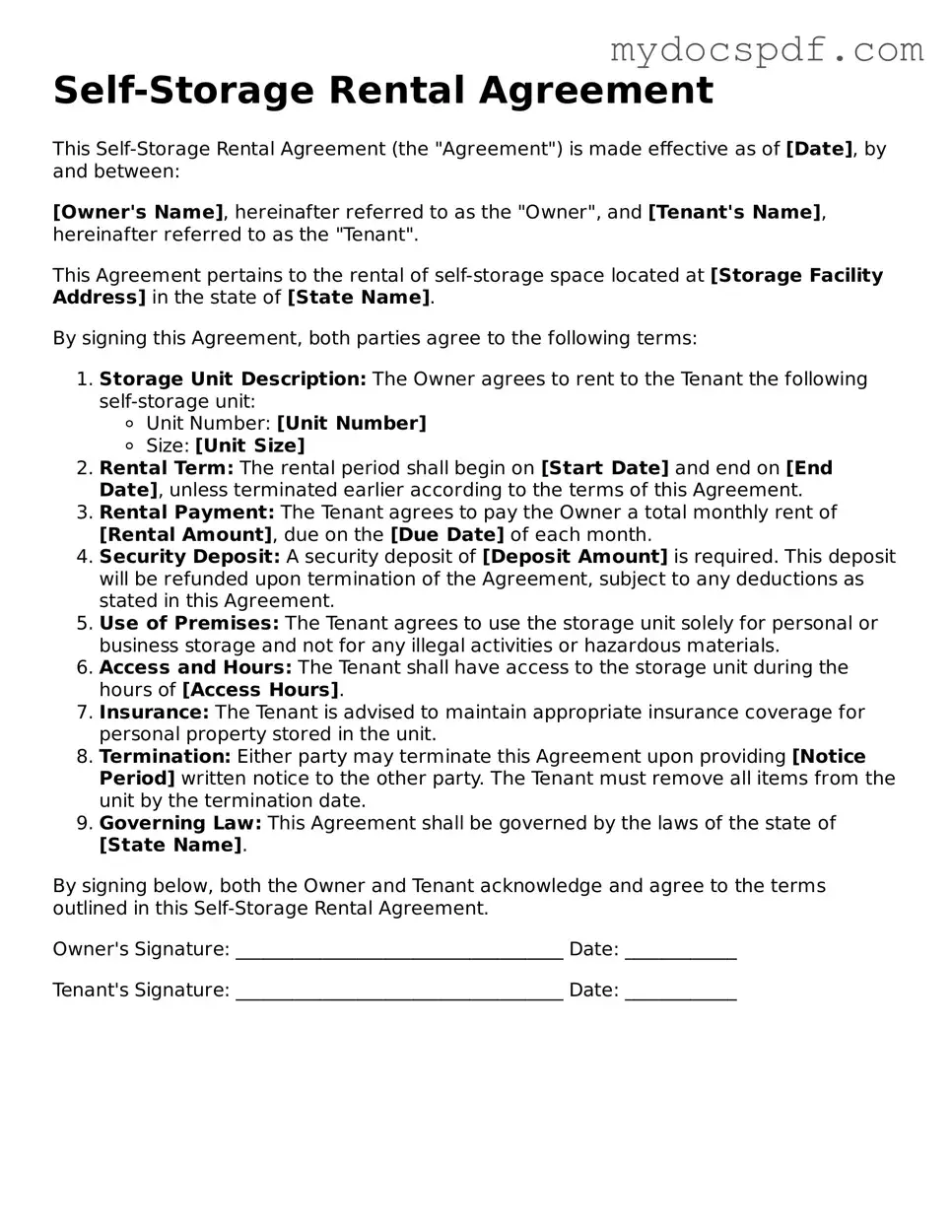Self-Storage Rental Agreement
This Self-Storage Rental Agreement (the "Agreement") is made effective as of [Date], by and between:
[Owner's Name], hereinafter referred to as the "Owner", and [Tenant's Name], hereinafter referred to as the "Tenant".
This Agreement pertains to the rental of self-storage space located at [Storage Facility Address] in the state of [State Name].
By signing this Agreement, both parties agree to the following terms:
- Storage Unit Description: The Owner agrees to rent to the Tenant the following self-storage unit:
- Unit Number: [Unit Number]
- Size: [Unit Size]
- Rental Term: The rental period shall begin on [Start Date] and end on [End Date], unless terminated earlier according to the terms of this Agreement.
- Rental Payment: The Tenant agrees to pay the Owner a total monthly rent of [Rental Amount], due on the [Due Date] of each month.
- Security Deposit: A security deposit of [Deposit Amount] is required. This deposit will be refunded upon termination of the Agreement, subject to any deductions as stated in this Agreement.
- Use of Premises: The Tenant agrees to use the storage unit solely for personal or business storage and not for any illegal activities or hazardous materials.
- Access and Hours: The Tenant shall have access to the storage unit during the hours of [Access Hours].
- Insurance: The Tenant is advised to maintain appropriate insurance coverage for personal property stored in the unit.
- Termination: Either party may terminate this Agreement upon providing [Notice Period] written notice to the other party. The Tenant must remove all items from the unit by the termination date.
- Governing Law: This Agreement shall be governed by the laws of the state of [State Name].
By signing below, both the Owner and Tenant acknowledge and agree to the terms outlined in this Self-Storage Rental Agreement.
Owner's Signature: ___________________________________ Date: ____________
Tenant's Signature: ___________________________________ Date: ____________
